



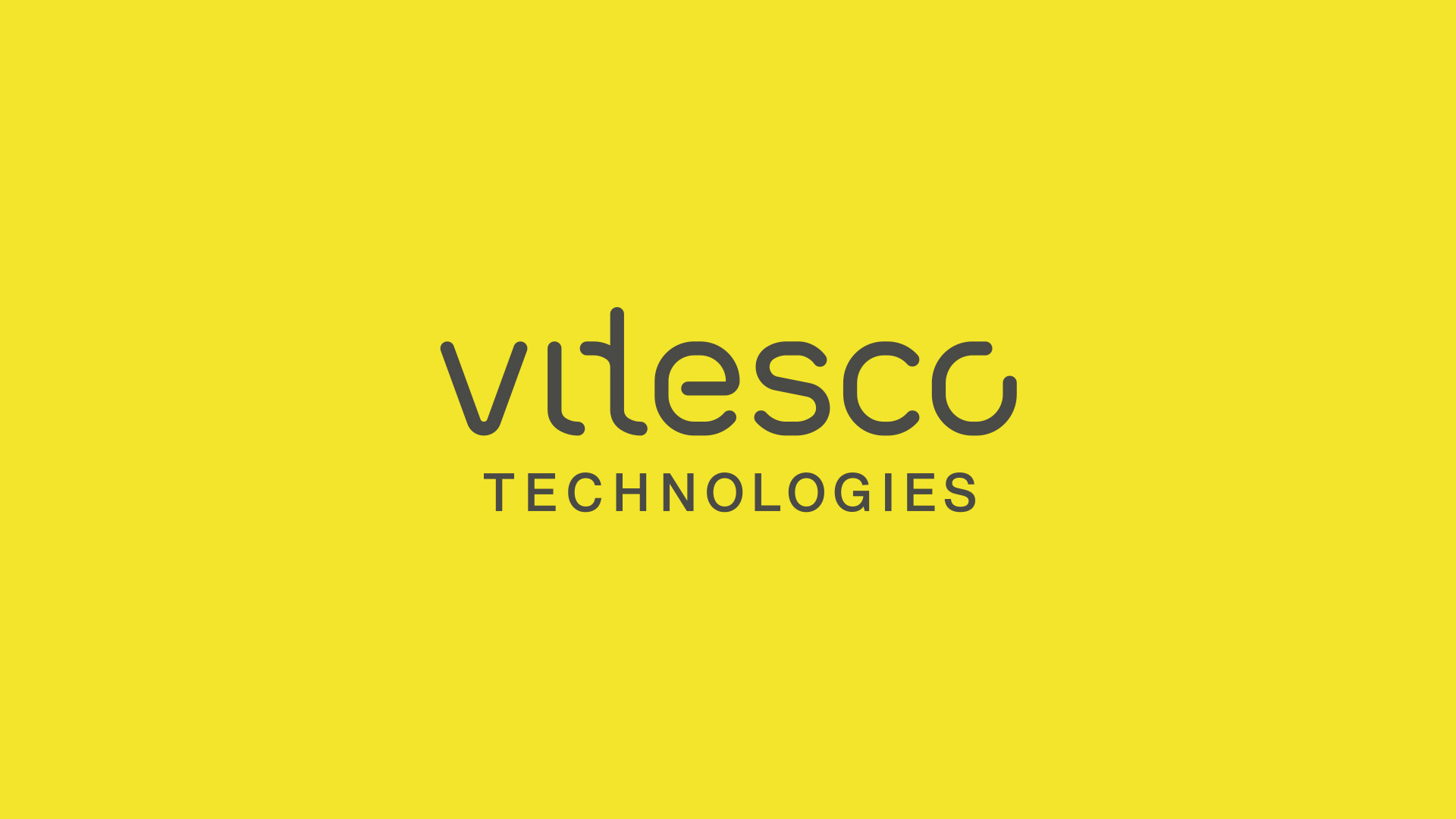





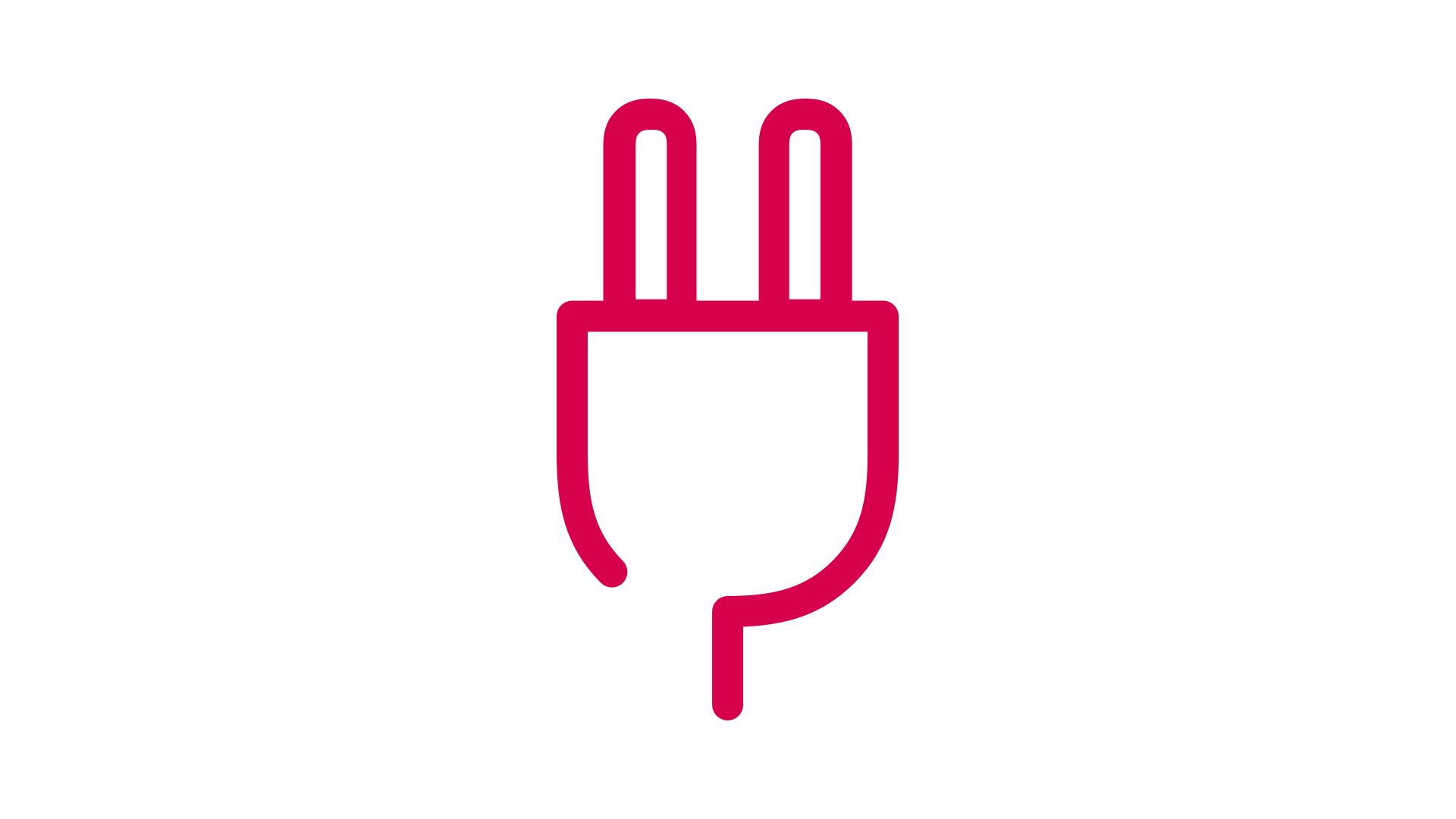
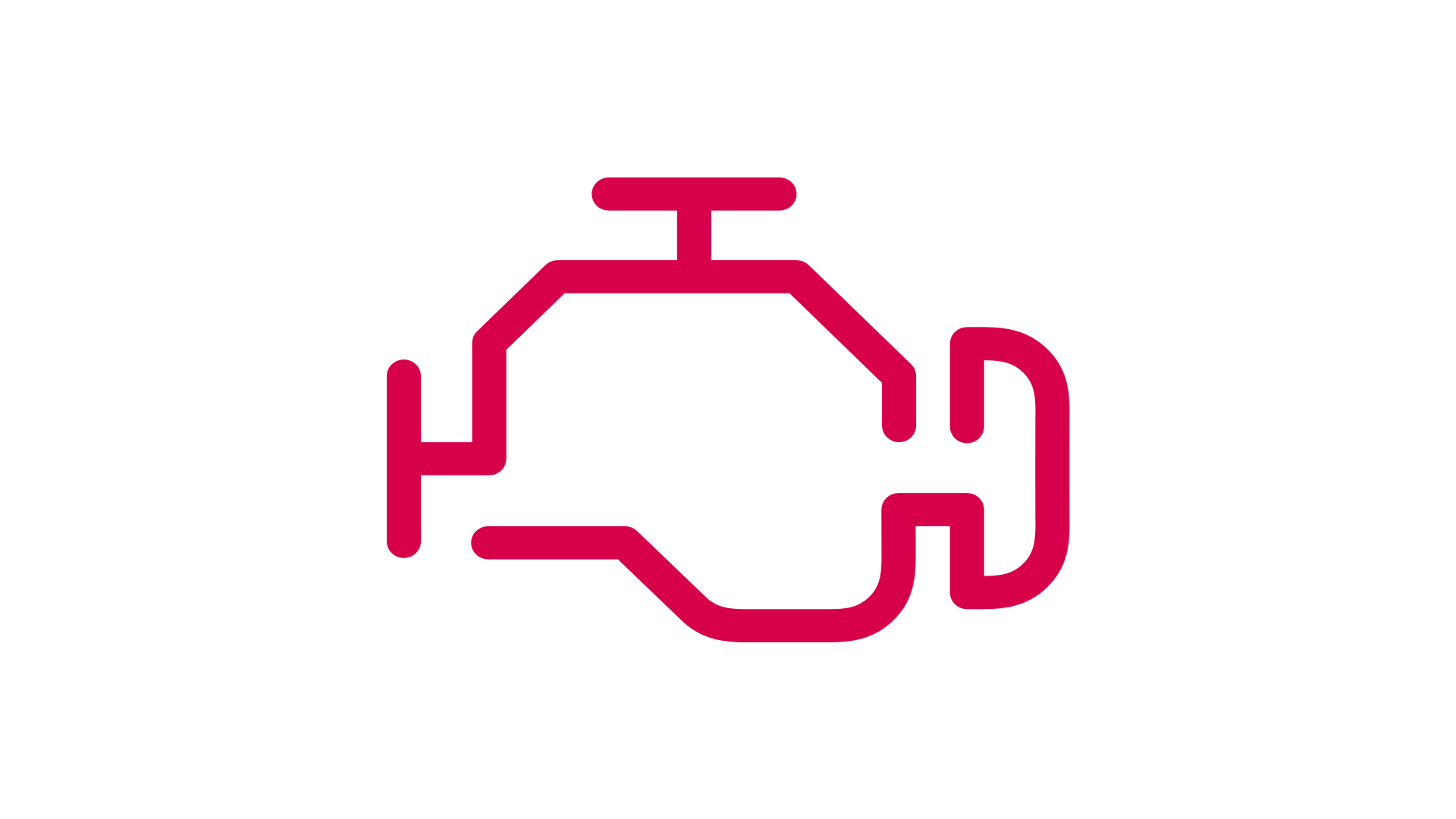
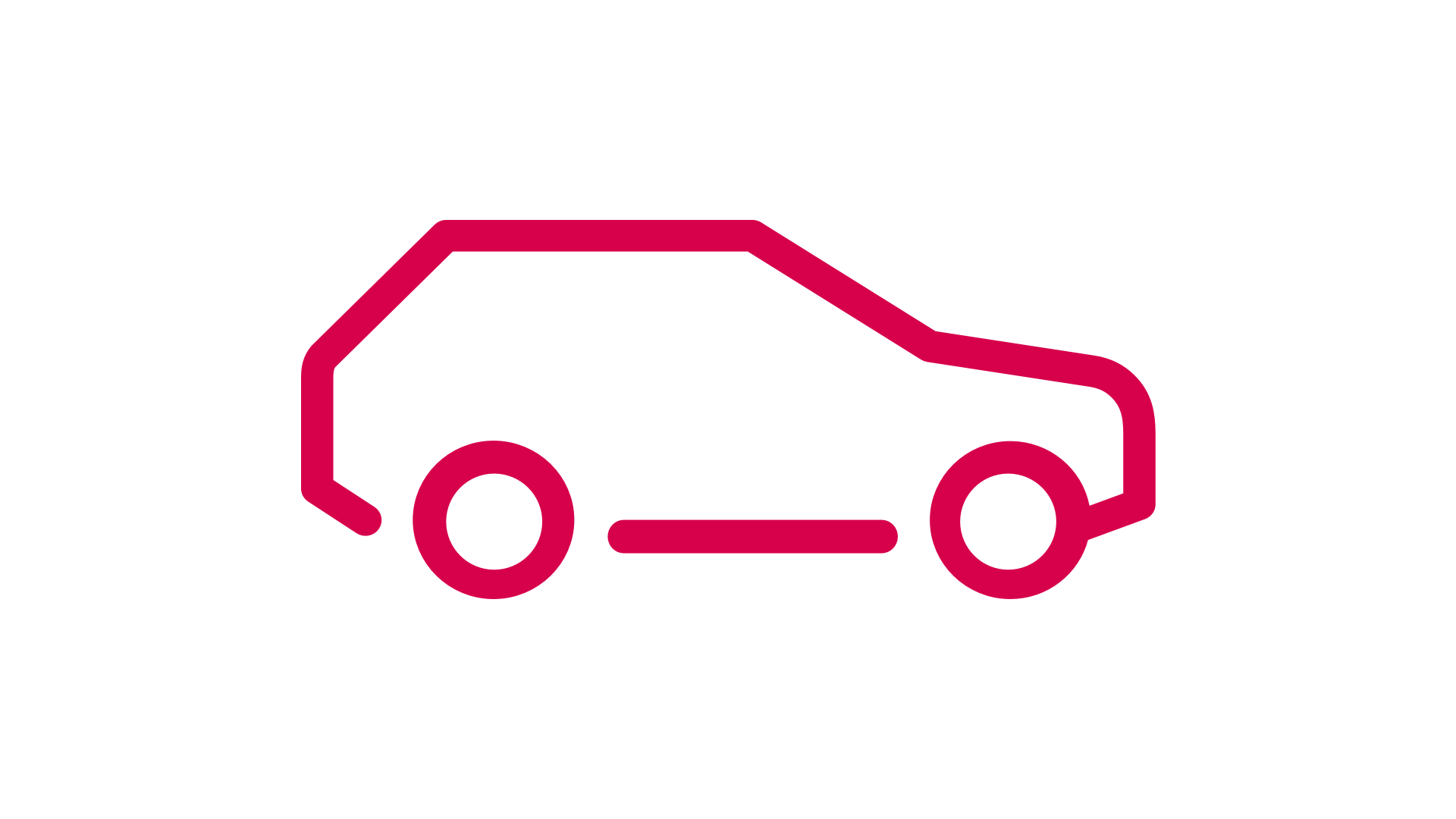
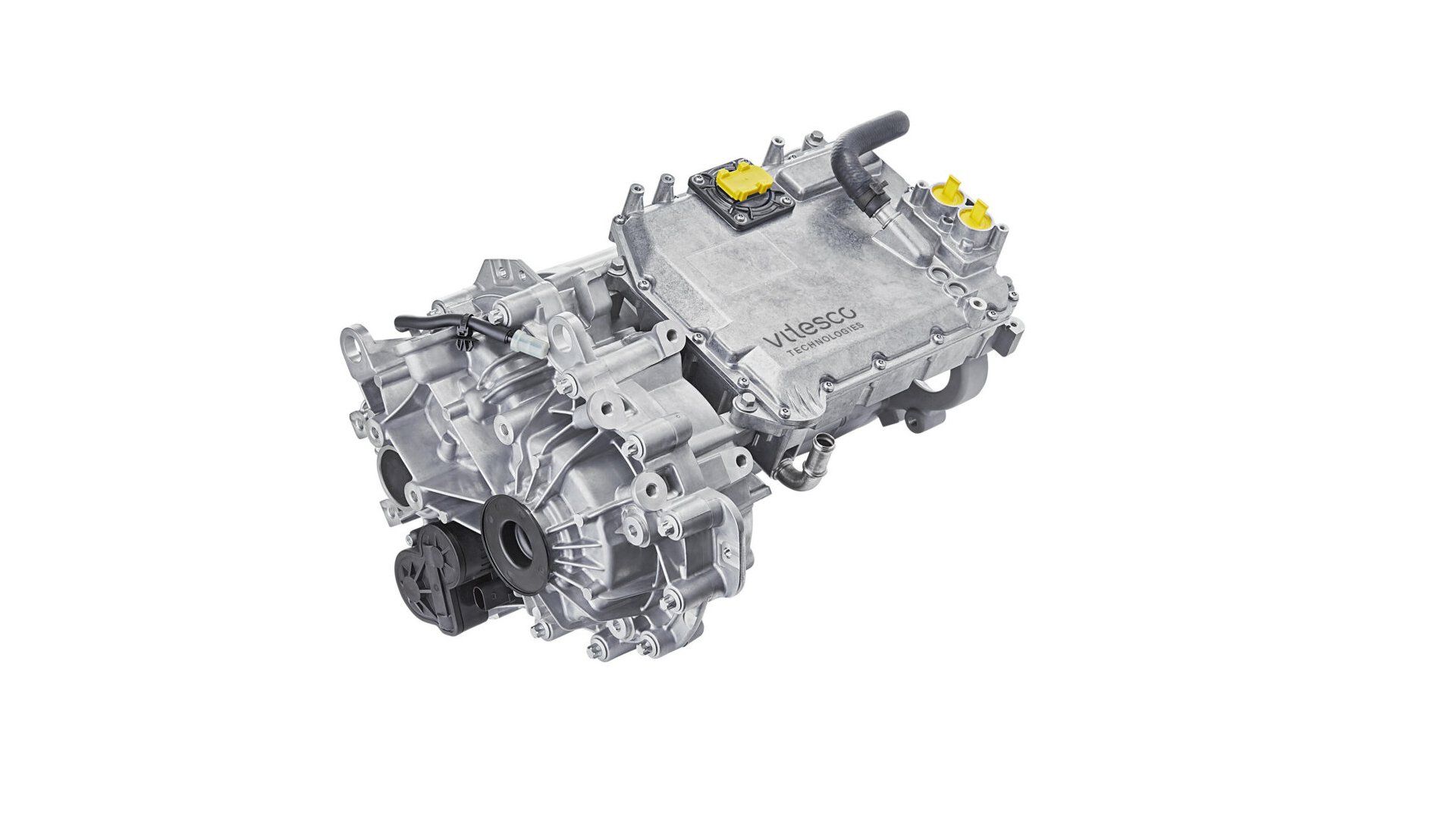
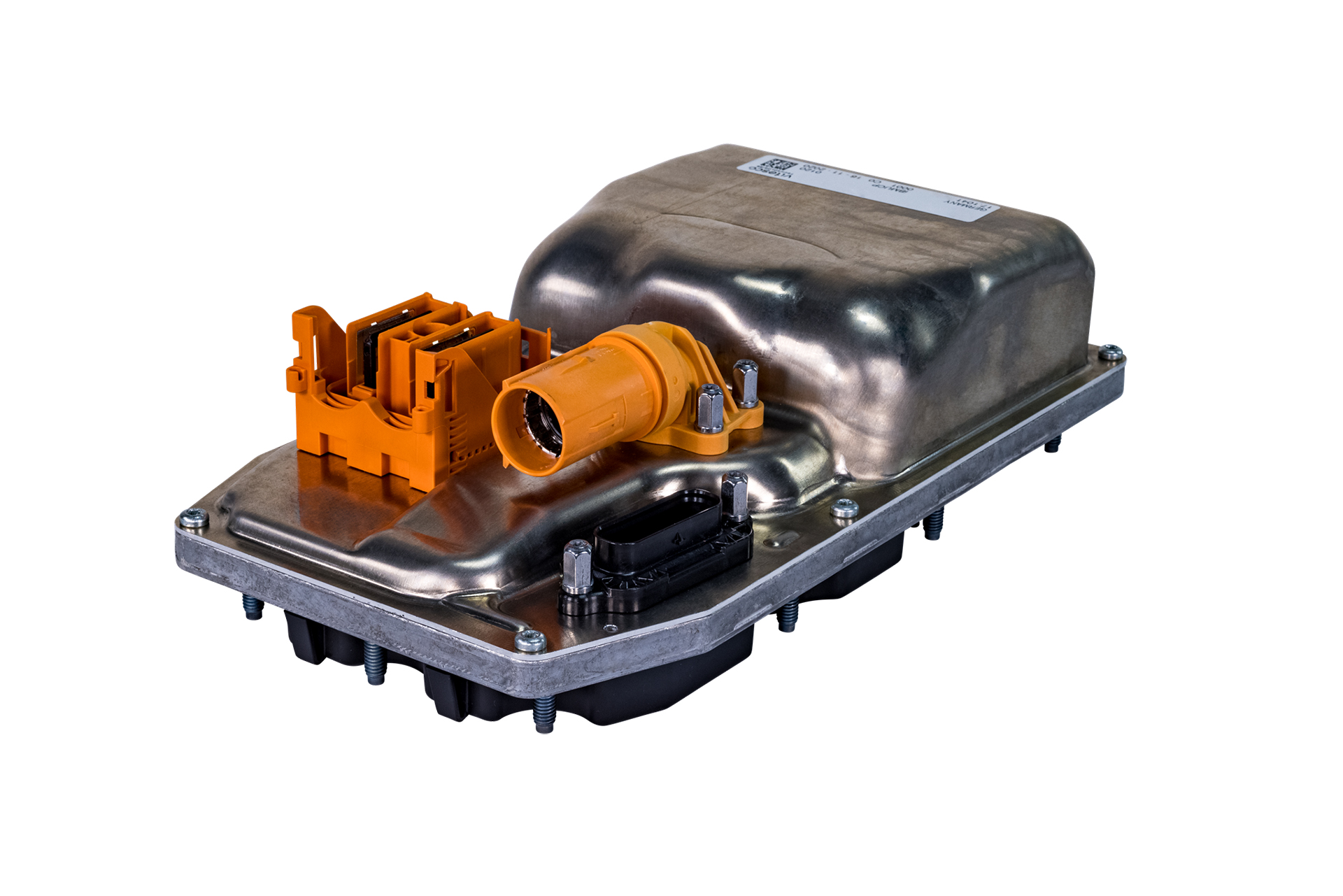
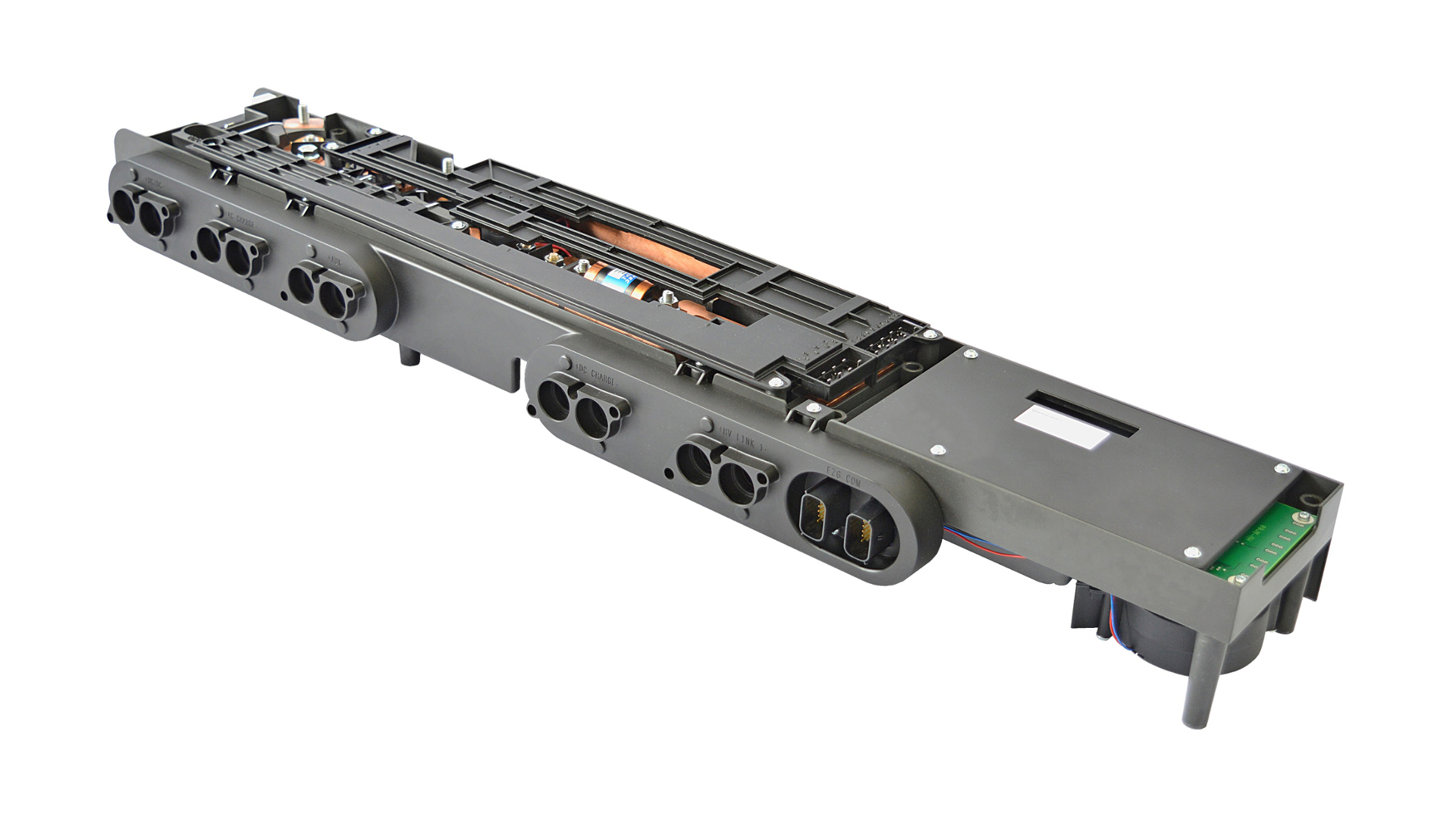

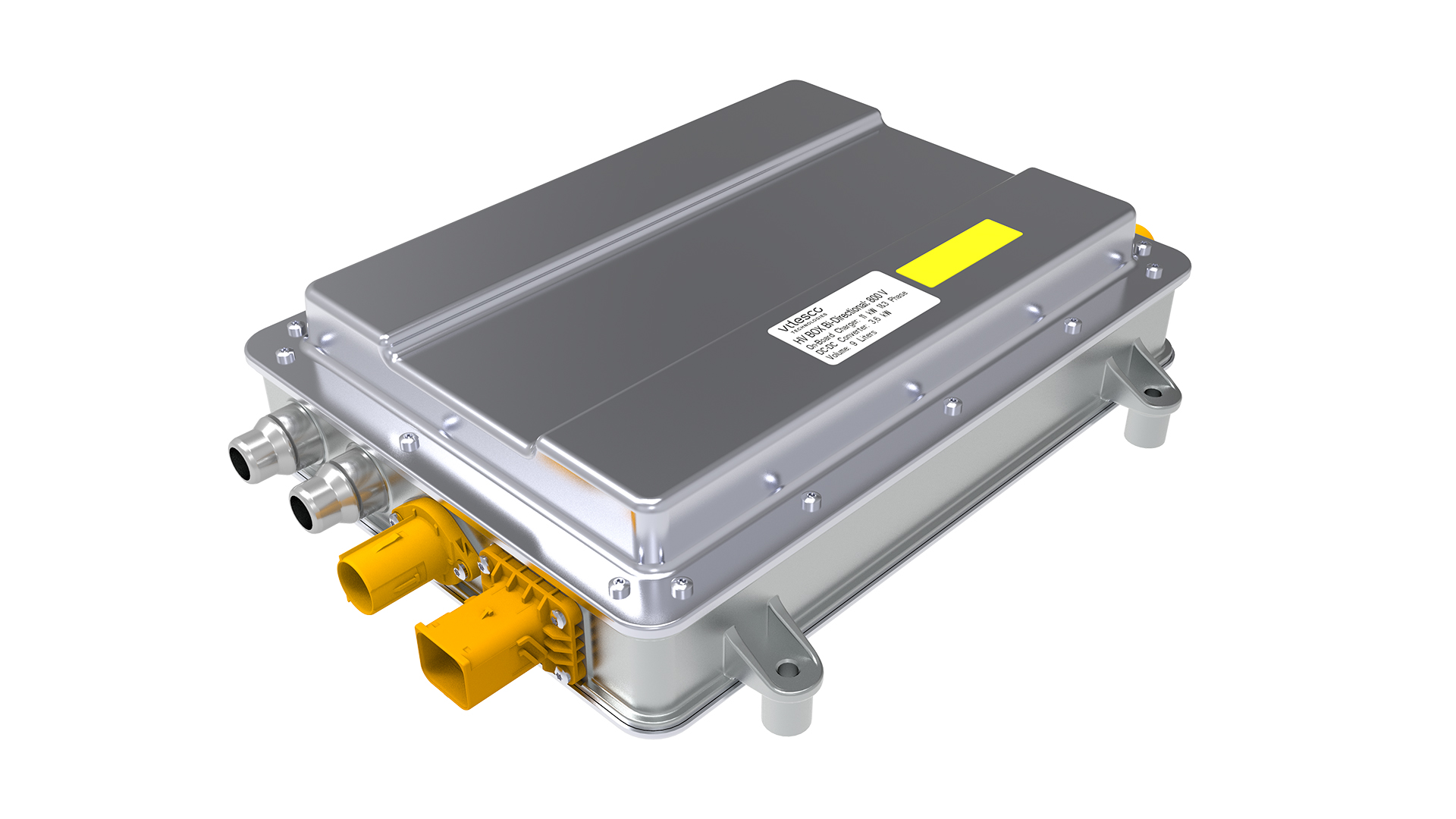
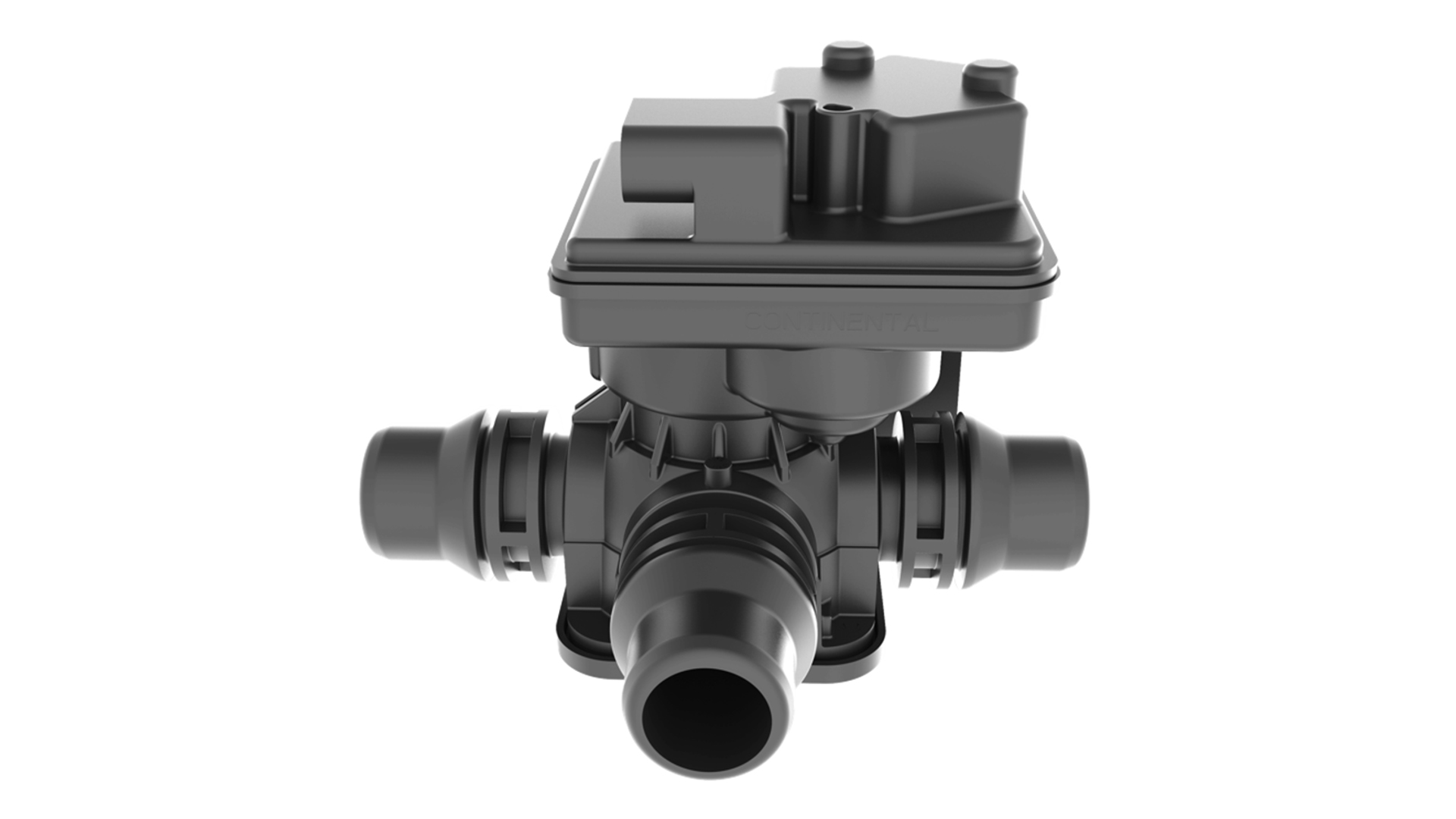
.jpg?width=407&resizemode=force)




















The Vitesco Technologies Group became part of the Schaeffler Group as of October 1, 2024, due to the merger of Vitesco Technologies Group AG into Schaeffler AG.
Please note: Legal or actual changes since October 1, 2024, are therefore no longer reflected in the content of the website.
As the website is no longer updated, we assume no liability for the content of this website, or the linked websites contained therein. The operators of the linked sites are solely responsible for their content.
Irrespective of this, you can still find the current BPCoC and the General Terms and Conditions of Purchase at Vitesco Technologies - Suppliers (vitesco-technologies.com)
Under the following link you will find the current Schaeffler website:



















.jpg?width=407&resizemode=force)




















Regensburg, April 19, 2021. What skills do I need, what qualifications are required, for professional advancement? For employees engaged in complex production, this can often be difficult to understand. But not at Vitesco Technologies: With its “Career Map,” the company – a leading international provider of drive technologies and e-mobility solutions – has piloted an innovative project that has already been successfully rolled out at 14 locations worldwide: An open access and easily traceable overview of possible career paths in production and logistics, setting out the necessary qualifications as well as the specific requirements for further progress to a next-level position.
The Career Map also includes a schedule for training sessions, which enable employees to meet the qualification requirements. This creates an incentive for further training and the addition of new knowledge.
Based on a pilot project in Brasov, Romania, a team of junior employees and professionals from various disciplines has spent several months working on rolling out the Career Map system as a global standard. They analyzed the various different qualification systems and industry standards and compared them with the target in order to determine the need for adjustment in each case. Since the locations sometimes differ greatly from each other with regard to the products manufactured there, the location-specific Career Maps also vary – with different job profiles and requirements for expertise and qualification.
After 15 months, the first wave of implementation has been successfully completed and the career map is in use at 14 locations: in Pune (India), Juarez (Mexico), Wuhu, Tianjin and Changchun (China), Debrecen (Hungary), Amata City (Thailand), Frenstat and Trutnov (Czech Republic), Pisa (Italy), Icheon (South Korea), Boussens & Foix (France), Seguin (USA), Brasov (Romania). Further locations will follow in the coming months.
The company also wants to document and measure how the Career Map is helping employees to develop in one of the four areas – leadership, technology, quality, and logistics. For example, by recording how many production employees followed the Career Map to obtain further qualifications, and how many of them were able to gain a higher-quality vacant position as a result.
“In the future, we also want to digitalize the Career Map, which to date has been a purely analog format in the production areas, so as to directly link vacancies in the company and the appropriate qualification opportunities,” explains Ingo Holstein. “We also want to promote self-directed learning: Training for employees in production should increasingly be digital, on call and accessible from anywhere.”
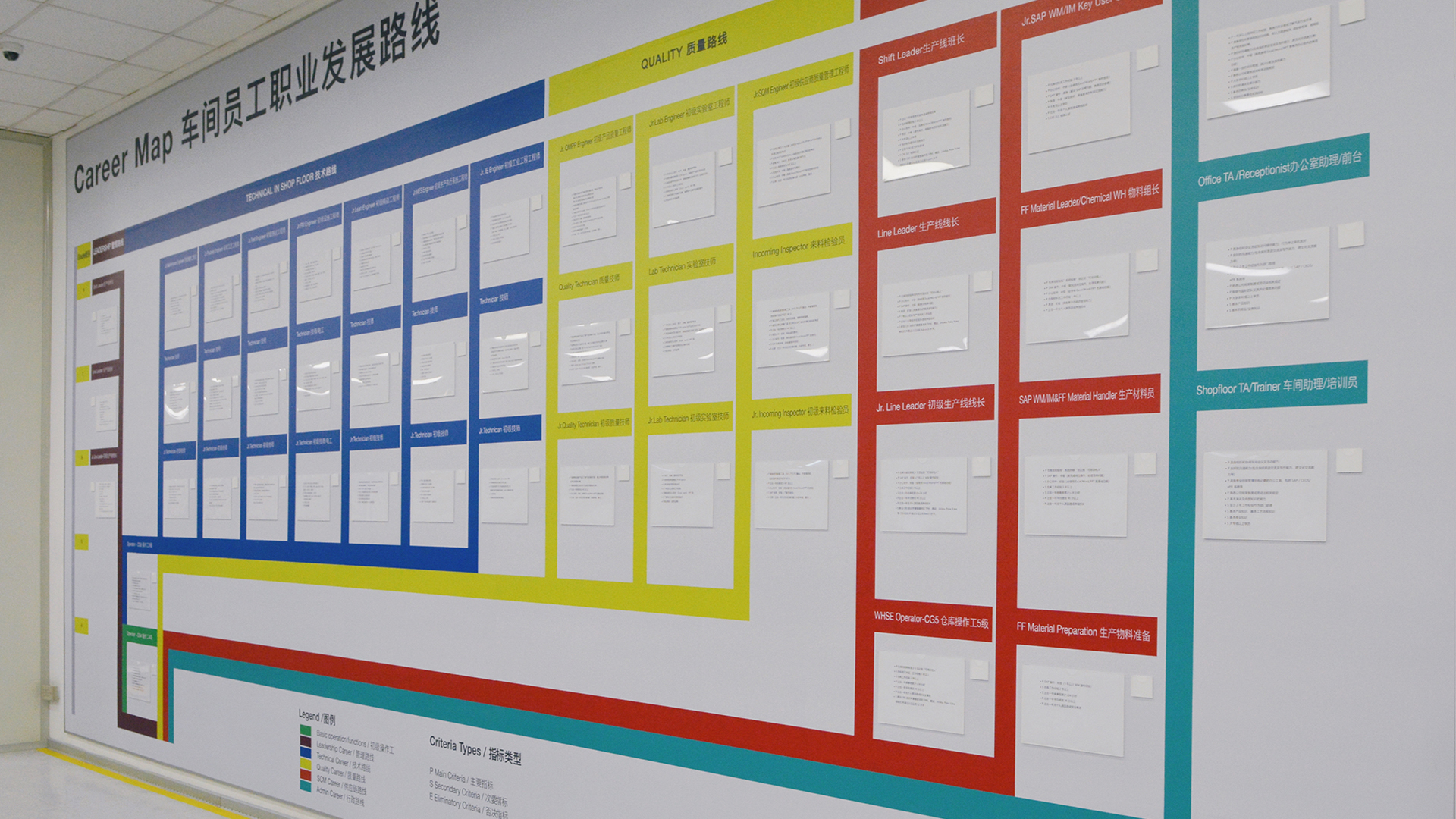
The Career Map, which has already been implemented at 14 Vitesco Technologies locations (as depicted here in Changchun, China), is an open access and easily traceable overview of possible career paths in production and logistics
© Vitesco Technologies GmbH (exclusive rights)
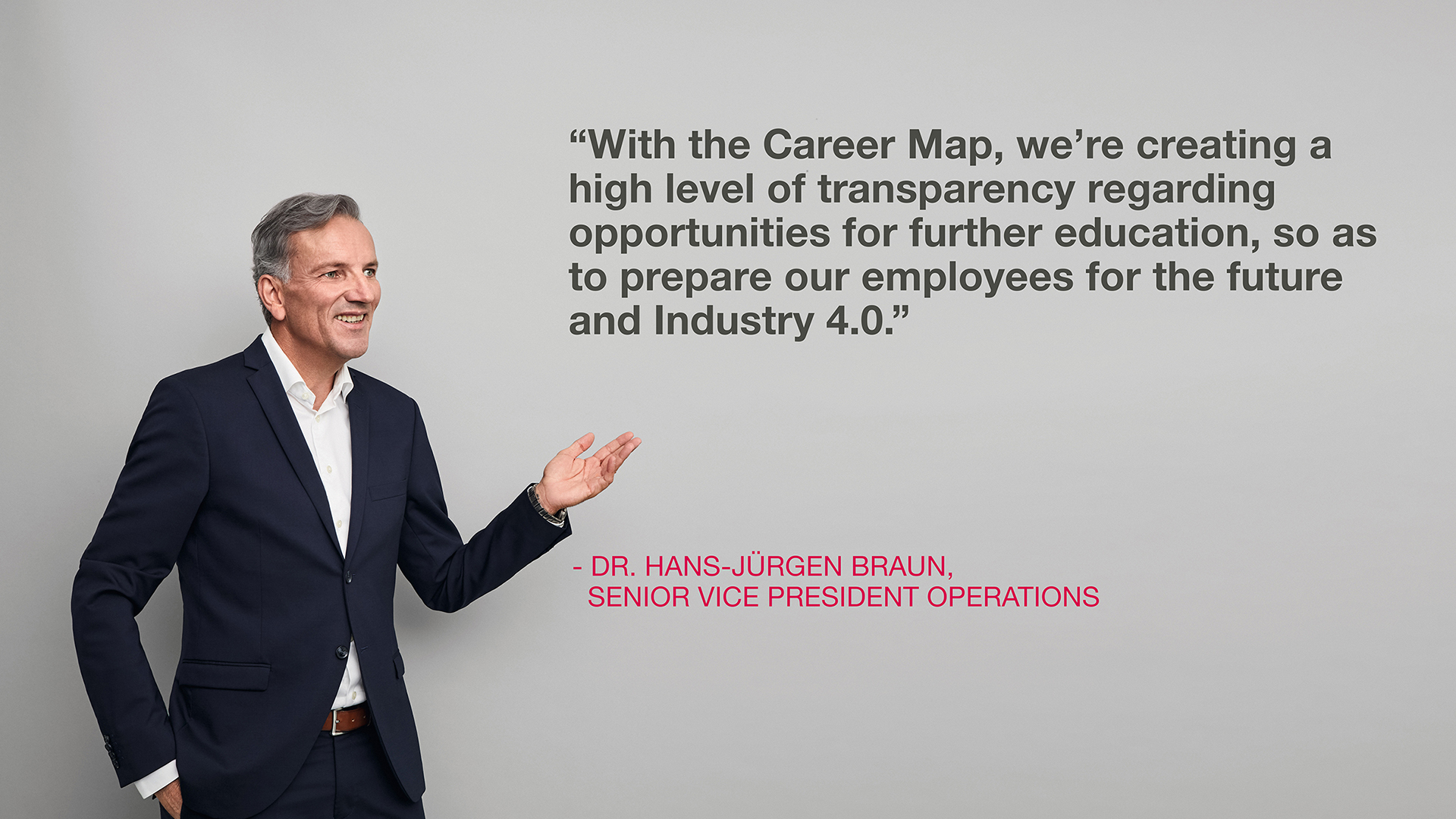
© Vitesco Technologies GmbH (exclusive rights)